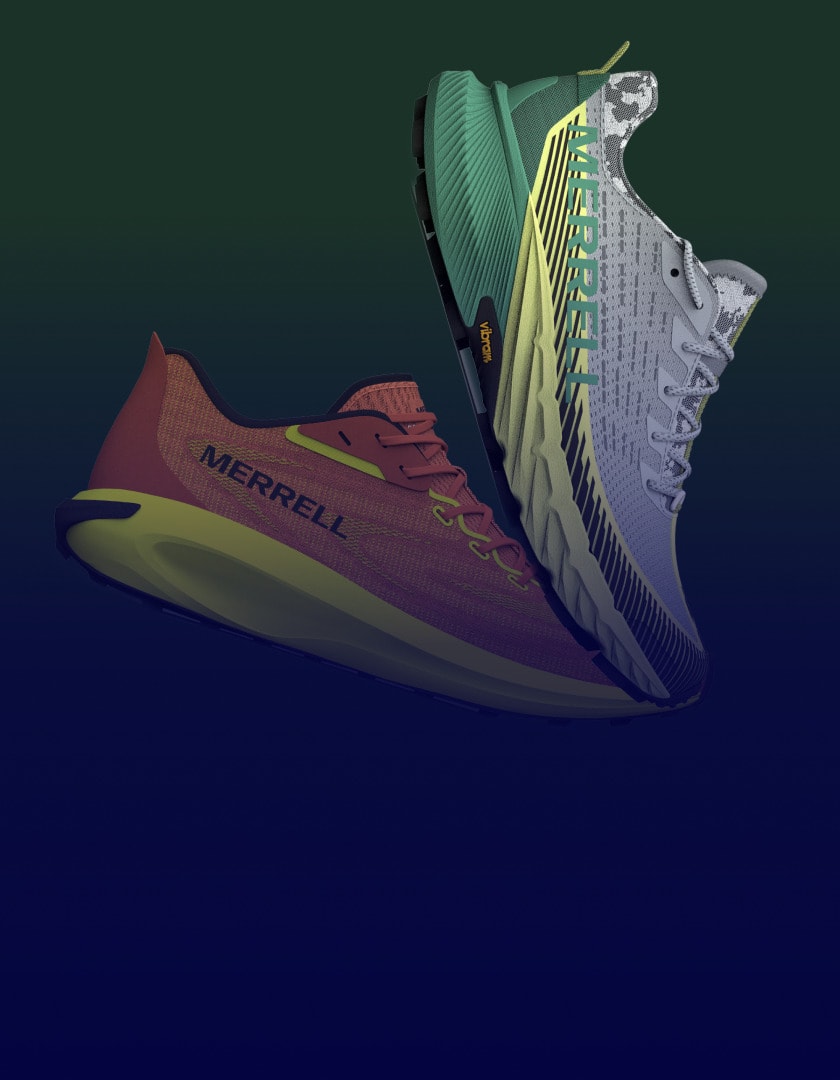Inventory Reduction Strategies for Fashion Brands & Retailers

According to a 2023 study, retail businesses lose more than $1.3 trillion to inventory “distortion” every year, which includes overstocking, understocking, and other inventory-related issues that can cause brands and retailers significant financial losses.
Accurately predicting inventory needs—especially as they change from season to season, and year to year—is a monumental task, especially for fashion brands and retailers who need to adapt quickly to oft-changing consumer trends and styles.
To avoid unnecessary inventory waste and the costs and resources associated with it, brands can put inventory reduction strategies to use in order to run as efficiently as possible. In this article, we’ll review some of the more effective inventory reduction techniques companies can use to balance production and consumer demand as sustainably as possible.
Inventory Reduction Explained
Inventory reduction is the process of strategically managing stock levels to minimize excess inventory while ensuring that products are available to meet customer demand. It involves techniques such as accurate demand forecasting, efficient supply chain management, and lean manufacturing practices.
For fashion brands and retailers—particularly for those who build sustainability into their core messaging—reducing inventory is crucial for several reasons: it frees up capital that would otherwise be tied up in unsold products, reduces storage and holding costs, and minimizes the need for markdowns or end-of-season sales.
Inventory Reduction Strategies
Excess inventory often leads to waste, which can be detrimental to both profitability and sustainability efforts. By optimizing inventory levels, brands can improve cash flow, boost profitability, and align with eco-friendly practices, all while meeting customer needs more efficiently.
Here’s a look at valuable techniques fashion brands and retailers can implement to begin reducing inventory, inventory costs, and resources invested in management of goods.
Sustainable Sourcing and Manufacturing
Reducing inventory doesn’t just involve smart selling strategies—it begins with sustainable sourcing and production.
By selecting eco-friendly materials and working with suppliers who prioritize sustainability, fashion brands can align their inventory reduction strategies with environmental goals. Smaller, more sustainable production runs can help limit excess stock and the associated waste.
For example, some brands are adopting on-demand manufacturing models, where items are only produced once an order is placed. This approach not only eliminates the risk of overproduction but also allows consumers to have a personalized experience with customizable designs.
The trend toward sustainability has increased demand for made-to-order and limited-run items, which can significantly reduce inventory waste.
Optimized Demand Forecasting
One of the most effective ways to reduce excess inventory is through accurate demand forecasting.
Predicting consumer demand with greater accuracy allows brands to produce the right amount of product, reducing the risk of overstocking and markdowns. To achieve this, fashion retailers must analyze historical sales data, track current trends, and consider seasonality and other external factors.
Tools such as predictive analytics and AI-driven algorithms can help by analyzing vast amounts of data to forecast trends with precision.
These insights enable brands to make smarter production decisions, reducing the likelihood of excess inventory while ensuring that popular items remain in stock. Accurate forecasting is particularly essential in the fast-moving fashion industry, where trends can shift quickly.
Just-in-Time (JIT) Production
Just-in-time production is a lean manufacturing approach that helps brands produce goods in response to real-time demand, minimizing the need for large upfront inventories. By closely coordinating with suppliers and manufacturers, fashion brands can produce garments only when needed, drastically reducing storage costs and the risk of unsold inventory.
Implementing just-in-time production requires a highly efficient supply chain and tight collaboration with suppliers. Fashion retailers must have visibility across the entire supply chain to ensure materials are sourced and delivered on time.
When executed correctly, JIT can lead to significant cost savings, reduced waste, and improved sustainability.
Product Reuse and Circular Fashion
The rise of circular fashion provides an innovative way for brands to reduce waste and manage excess inventory.
By adopting recycling, upcycling, and resale initiatives, brands can repurpose unsold stock and create new value. For example, some companies are transforming deadstock fabric into new garments or selling pre-loved items through their own resale platforms.
Resale programs, particularly, are gaining popularity as consumers become more conscious of the environmental impact of fast fashion.
By enabling customers to return or sell back used items, fashion brands can extend the lifecycle of their products, reduce waste, and build stronger relationships with eco-conscious shoppers.
Data-Driven Inventory Management
Inventory optimization involves maintaining the right amount of stock at each stage of the supply chain—whether it’s in the warehouse, store, or online.
By using data-driven insights, retailers can strategically place inventory where it’s most likely to sell, reducing the need for markdowns and end-of-season sales.
Advanced analytics can help brands understand where inventory is selling, at what price, and in what quantities. This allows retailers to adjust stock levels dynamically, minimizing excess inventory while maximizing availability in high-demand regions.
Transitional Inventory Planning
Fashion brands often face the challenge of leftover stock at the end of each season, leading to heavy discounting and markdowns that erode profit margins.
To avoid this, retailers can implement better seasonal transition planning. This involves planning collections that are versatile and can be carried over multiple seasons without appearing outdated.
Creating capsule collections or using classic, timeless designs that don’t go out of style as quickly allows retailers to sell products year-round, reducing the risk of seasonal excess inventory.
Additionally, effective end-of-season promotions and inventory liquidations should be planned well in advance to prevent stock from piling up.
Lean Inventory Practices
Adopting lean inventory practices can help fashion retailers reduce the number of SKUs (stock-keeping units) they manage, which in turn reduces the complexity of inventory management.
By focusing on fewer, higher-performing products, brands can streamline operations and prevent stockouts of key items while minimizing excess inventory of slow-moving products.
SKU rationalization involves analyzing product performance and eliminating low-performing items from future collections. This strategy is particularly effective in fashion, where trends evolve quickly.
Brands can regularly assess their product lines to identify which SKUs should be discontinued or reduced, leading to a more focused inventory.
Optimizing Inventory with Product Lifecycle Management
While each of these inventory reduction strategies can significantly improve a brand’s efficiency, leveraging a comprehensive product lifecycle management (PLM) system can amplify their effectiveness.
PLM tools offer end-to-end visibility into the product development process, from concept to final delivery, ensuring that all teams work from the same data and insights.
Fashion brands and retailers can benefit from PLM tools ability to improve:
- Team-to-team collaboration: PLM systems enable seamless collaboration between design, sourcing, and production teams. This ensures that everyone is aligned on product specifications and timelines, reducing the chances of overproduction or stock imbalances.
- Data-centered decisions: With real-time data on materials, costs, and market demand, PLM systems allow brands to make informed decisions about which products to produce, how much, and when. This reduces the likelihood of excess inventory and improves sell-through rates.
- Sustainability initiatives: Many PLM systems incorporate sustainability features that allow brands to track the environmental impact of their sourcing and production decisions. This aligns inventory management with broader sustainability goals, ensuring that eco-friendly practices are applied throughout the product lifecycle.
- Forecasting integration: Modern PLM solutions often integrate with demand forecasting tools, allowing fashion brands to plan inventory more accurately based on real-time sales trends and consumer behavior.
- Product agility and iteration: By offering transparency and flexibility in the product development process, PLM systems enable faster response times to changes in demand, helping brands avoid overproduction and reduce waste.
Some inventory management platforms and tools may assist in some of these areas, but a product lifecycle management platform offers end-to-end optimization where all data, changes and processes are managed in a “single source of truth.”
Transform the Way Your Company Manages Inventory
Effective inventory reduction is essential for fashion brands and retailers to remain competitive and sustainable in today’s market. By leveraging strategies like accurate demand forecasting, just-in-time production, sustainable sourcing, and data-driven insights, businesses can minimize excess stock, reduce waste, and enhance profitability.
When combined with the power of PLM tools, these strategies become even more effective, enabling brands to streamline operations, improve collaboration, and achieve their inventory management goals while prioritizing sustainability.








